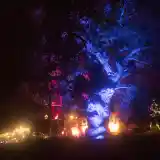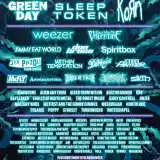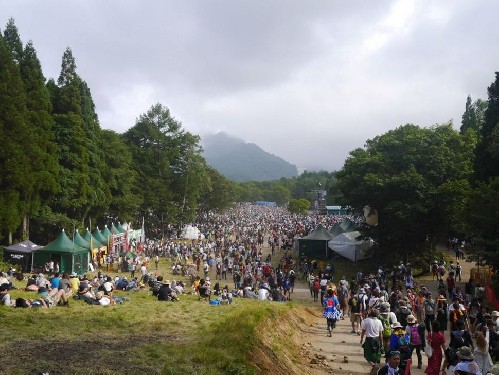
Fuji Rock Festival 2016
Friday 22nd to Sunday 24th July 2016Naeba ski resort, Yuzawa, Minamiuonuma District, Japan MAP
43000 yen (around £310) for a 3 day pass
Fuji Rock has always had a curious appeal – the concept of a music festival in the mountains of Japan sounds like an experience not to be missed. Strange tales emerge from this event, ranging from the sublime (wandering through beautiful forests, paddling in mountain streams) to the downright dangerous (being hit by typhoons). After moving to Japan last year, this was not something I was going to miss out on.
Japan doesn’t exactly have a reputation as a cheap country, and tickets here are no exception. In fact, all major concerts here are significantly more expensive than you would find in the UK. This year, tickets for Fuji Rock came in at 43,000 yen, which (at time of writing) works out at just over the £300 mark. Ouch. However, on site food and alcohol comes in much cheaper than almost any UK festival -drinks and food all start from about 500 yen (roughly £3.50) - so once you are on site it’s not too much of a bank breaker.
For a festival named after Japan’s ubiquitous huge volcano, it is actually quite a long way from Mt Fuji. Getting to the festival is a slightly complex activity – once you reach Echigo Yuzawa on the Shinkansen (Bullet train, an hour’s ride from Tokyo), you enter a backlog of festival goers all trying to cram into the provided festival busses for the final 40 minute ride up into the mountains. A bit of patience is required, but before long you’ll be on site.
Speaking of festival sites, this has surely got to be one of the most beautiful in the world. The festival is spread out along the bottom of a steep and densely forested valley. A significant number of attendees stay in nearby hotels, but there is also a campsite. The campsite itself is a bit of a lottery – being based in a ski resort, flat ground can be a bit scarce so unless you get your hands on an early entry pass for the Thursday, you may have to put up with a not entirely flat sleeping position. If it’s any compensation, the views from the campsite are pretty spectacular!
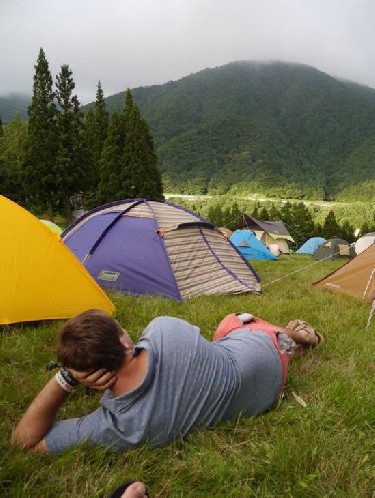
Getting from stage to stage is (crowd dependent) reasonably straightforward thanks to a well-planned network of paths and beautiful wooden walkways through the trees. Paths are well lit and decorated with sculptures, signs, mirror balls and even audiovisual installations, so it never felt like a chore to get around. There is even a small stage lurking in the woods if you feel the need to break up your journey.
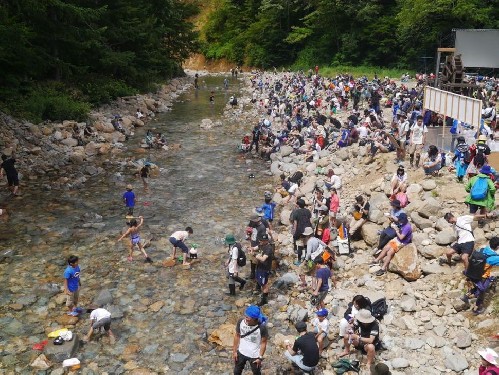
The Green Stage is the de facto main stage of the festival, set in a large open bowl. This stage focuses almost exclusively on rock bands, including the festivals headline acts. Sigur Ros,, performing with just the three core members, played a spellbinding and intense set on the Friday night. Saturday’s headliner Beck kept the crowd jumping for their full 90 minute performance, and the festival was rounded off by a fairly lacklustre performance from the Red Hot Chili Peppers. Other Green Stage performances included crowd pleasing J-Punk favourite Ken Yokoyama, a driving afternoon rock show from Biffy Clyro and nostalgic throwbacks from Stereophonics, and Travis.
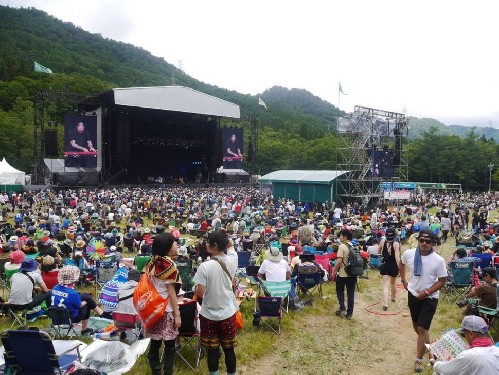
The second stage, dubbed the White Stage, plays a strong supporting role to the Green Stage. Overall, it seems the focus of this stage is vaguely electronic, hosting Disclosure, Flight Facilities, Battles, and Squarepusher. However the stage was also featured full throttle jazz from Soil and Pimp Sessions, post rock from Explosions In The Sky, a sprawling prog-metal performance from Deafheaven and the hard to describe yet unbelievably popular Babymetal.
For smaller rock bands, the Red Marquee is the place to head to. By day, smaller rock acts take to the stage - highlights included Courtney Barnett, and Kula Shaker – and from 11.30pm it switches to dance music, running all the way through to 5am.
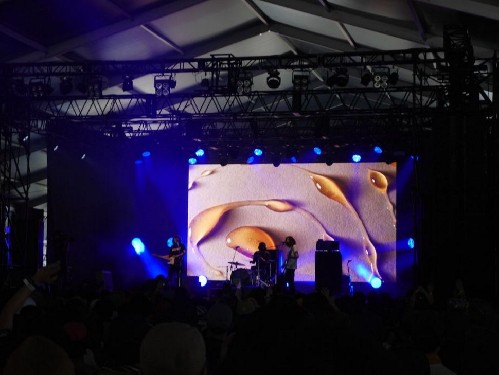
Hidden in a forest clearing is the Field of Heaven, offering a range of reggae, jazz and world music delights. Jamaican legends Lee Scratch Perry, and Ernest Ranglin,, jazz journeyman Kamasi Washington and Japanese psych outfit ROVO all played superb shows in this wonderfully laid back corner of the festival.
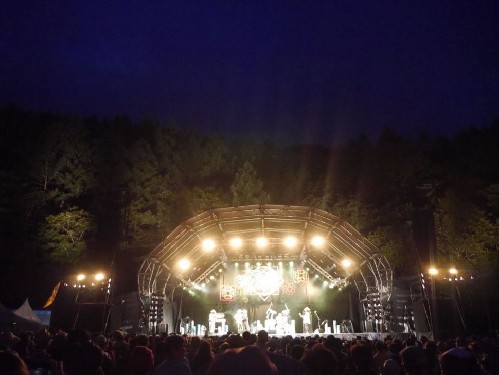
In addition to these main four stages, the festival has many other smaller platforms for a range of Japanese, Korean and Taiwanese bands. These occasionally hard-to-find corners include the Orange Café (folk music and tribute bands, including the gloriously named Oggy Stardust and the Spiders from Naeba Forest), the Pyramid Garden (performances and environmental talks throughout the weekend), the Café de Paris (funk bands and elements of burlesque and cabaret) and the Daydreaming and Silent Breeze area. This final spot deserves a special mention as it is only reachable by taking the world’s longest cable car (rebranded the Dragondola for the weekend). This isolated spot sits high above the main site and is a pleasant escape from the hustle and bustle of the festival, featuring an eclectic range of laid back music.
The final area to mention is The Palace of Wonder, which provides alternative night time amusements when the non-stop beats and bass of the late night Red Marquee aren’t to your liking. There are two predominant stages here – The Crystal Palace, providing all night ska, funk, reggae and afrobeat, and the Rookie-A-Go-Go.
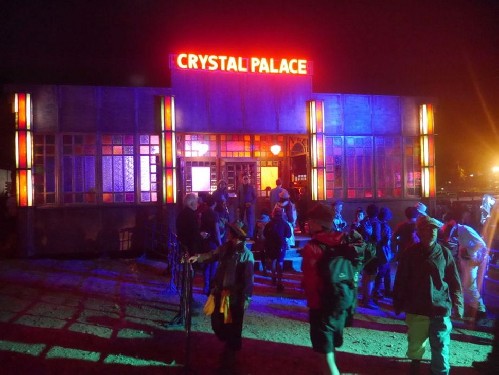
This stage is open to up and coming acts who get given a 30 minute slot to impress the crowd. The audience then votes for their preferred act over the weekend, with the winner receiving a spot on a major stage at next year’s festival. Last year’s winners, Sabannaman, delivered a fantastic set in the Red Marquee, proving that this is a decent way of picking out some new talent! The Palace of Wonder also includes a circus performance area, a couple of bars and Miniscule of Sound, held up as the smallest nightclub in the world with its capacity of 3 people.
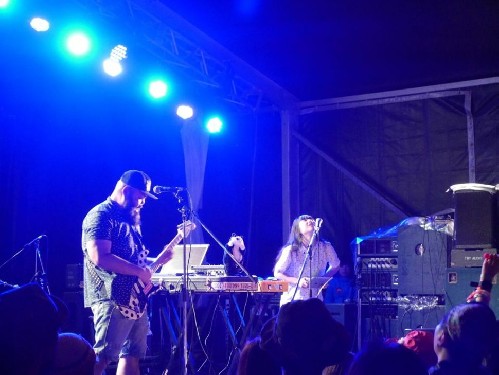
There is a diverse range of food and drink options, with global food and craft beer being particularly on trend in Japan. The festival itself is also very westernised – a significant number of tourists and Asia-based expats make the trip out to Naeba. English is widely spoken and the event shouldn’t pose any problems for anyone unfamiliar with Japanese language and culture. In fact, those expecting a distinctly Japanese experience may be disappointed by Fuji Rock due to the large degree of internationalisation. Japanese acts only make up a surprisingly small proportion of the line-up, and there is no particular prominence of Japanese food stalls among the high quality range of eating options available.
One very Japanese trait endures, however. For an event of its size and nature, Fuji Rock is an incredibly peaceful, relaxed and civilized festival. Many people bring their kids, and the roaming groups of drunk partiers from other similar-sized festivals are completely nonexistent. Those wanting to spend three days on a drunken rampage will likely be disappointed, but for everyone else the quality music, easy going atmosphere and beautiful surroundings make Fuji Rock an event that definitely deserves consideration from those looking to branch out a bit from the UK/European festival circuit.
For those of you wanting to put together a Fuji Rock-centred holiday to Japan, next years’ festival is due to run from 28th-30th July. I’m sure you won’t be disappointed…
Latest Updates
 Fuji Rock offers quality music, easy going atmosphere & beautiful surroundings
Fuji Rock offers quality music, easy going atmosphere & beautiful surroundingsFuji Rock Festival 2016 review
 Fuji Rock Festival 2016
Fuji Rock Festival 2016photo galleries
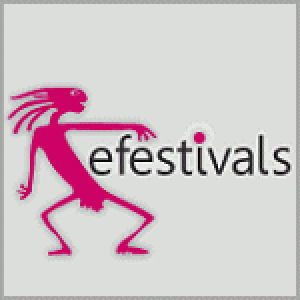 Fuji Rock Festival 2016
Fuji Rock Festival 2016festival details
 Fuji Rock Festival 2016
Fuji Rock Festival 2016line-ups & rumours
 Fuji Rock
Fuji Rockfestival home page




